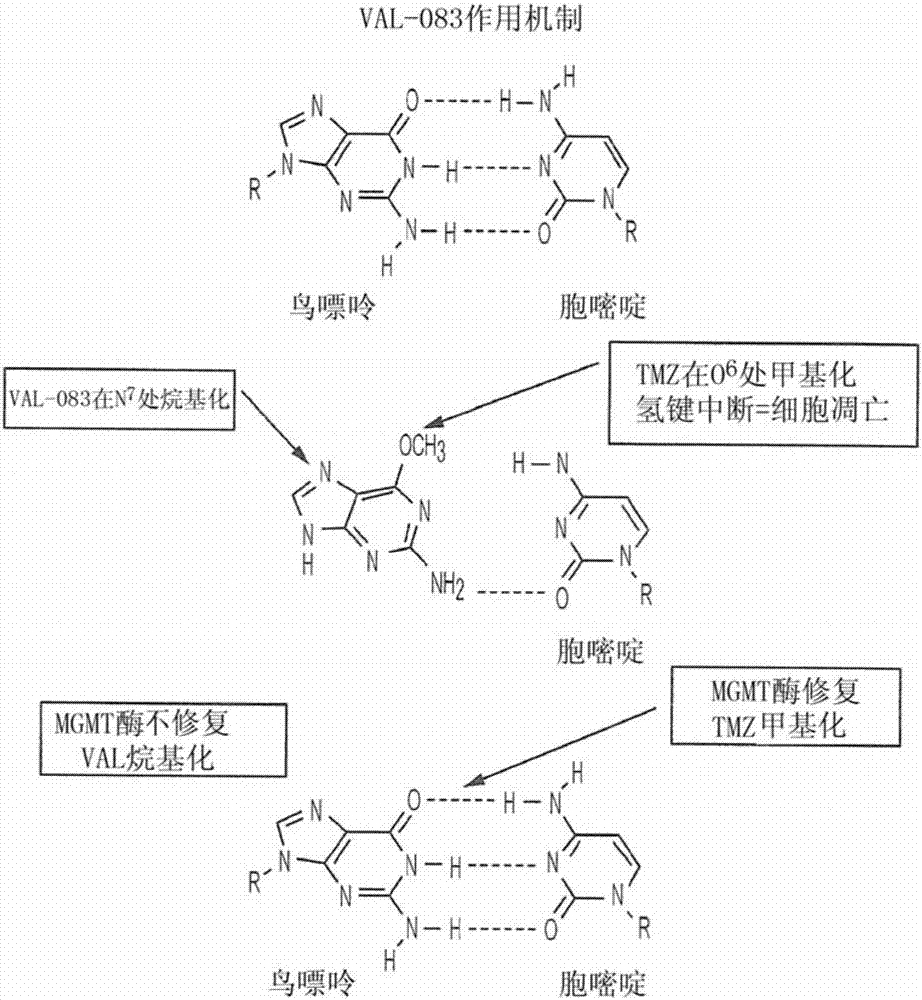Dianhydrogalactitol together with radiation to treat non-small-cell carcinoma of the lung and glioblastoma multiforme
A kind of non-small cell lung cancer, the technology of two dehydrated dulcitol, applied in the generation of hexitol and its field
- Summary
- Abstract
- Description
- Claims
- Application Information
AI Technical Summary
Problems solved by technology
Method used
Image
Examples
Embodiment 1
[1170] In vivo efficacy of dianhydrodulcitol in the treatment of non-small cell lung cancer using a mouse xenograft tumor model
[1171] background
[1172]The median overall survival time of patients with stage IV non-small cell lung cancer (NSCLC) is 4 months, and the 1-year and 5-year survival rates are less than 16% and 2%, respectively. NSCLC is usually treated with surgery followed by either tyrosine kinase inhibitor (TKI) (eg, erlotinib, gefitinib) treatment or platinum-based regimens (eg, cisplatin). TKIs have resulted in greatly improved outcomes for patients with EGFR mutations; however, TKI resistance has become a significant unmet medical need, and platinum-based therapies have a poor long-term prognosis. In addition, the incidence of brain metastases is higher in NSCLC patients and the prognosis is poorer.
[1173] Didodulcitol is a structurally unique bifunctional alkylating agent that targets the N of guanine 7 It mediates cross-linking between DNA strands,...
Embodiment 2
[1222] Response of primary glioblastoma multiforme cultures to didiodulcitol treatment with or without radiation answer
[1223] The standard of care for patients with glioblastoma multiforme (GBM) is surgical resection followed by temozolomide (TMZ) and radiation (XRT). TMZ is for presenting O 6 - Most effective in a minority of patients with epigenetic inactivation of O6-methylguanine DNA methyltransferase (MGMT), which removes methyl additions caused by TMZ Complex DNA repair enzymes. Thus, adducting DNA repair mechanisms that are not subject to MGMT may have additional benefits for GBM patients, most of whom express MGMT resistance or TMZ resistance, or acquire resistance after TMZ administration. The N7 alkylating agent, didhydrodulcitol ("VAL-083") is not subject to MGMT-mediated repair and thus may be a more effective chemotherapeutic agent. Dinghydrodulcitol is a first-in-class first-in-class alkylating agent that crosses the blood-brain barrier and is currently...
Embodiment 3
[1260] Treatment of Patients with Recurrent Malignant Glioma or Progressive Secondary Brain Tumors with Didodulcitol
[1261] Brain tumors are among the most challenging malignancies. For glioblastoma multiforme (GBM), the median survival rate for patients with recurrent disease is less than 6 months. Central nervous system (CNS) metastases have evolved to be a major contributor to cancer mortality because of the lack of access to improved systemic treatment of tumors that spread to the brain.
[1262] Frontline systemic therapy is temozolomide, but due to O 6 - Resistance caused by methylguanine-DNA-methyltransferase (MGMT) activity has been implicated in adverse outcomes. This resistance greatly reduces survival rates.
[1263] Dinghydrodulcitol is the first-in-class first-in-class bifunctional N that easily crosses the blood-brain barrier and accumulates in brain tissue 7 DNA alkylating agent. dianhydrodulcitol in N 7 - Guanine causes DNA interstrand crosslinks (E.I...
PUM
| Property | Measurement | Unit |
|---|---|---|
| molecular weight | aaaaa | aaaaa |
| diameter | aaaaa | aaaaa |
| diameter | aaaaa | aaaaa |
Abstract
Description
Claims
Application Information
 Login to View More
Login to View More - R&D
- Intellectual Property
- Life Sciences
- Materials
- Tech Scout
- Unparalleled Data Quality
- Higher Quality Content
- 60% Fewer Hallucinations
Browse by: Latest US Patents, China's latest patents, Technical Efficacy Thesaurus, Application Domain, Technology Topic, Popular Technical Reports.
© 2025 PatSnap. All rights reserved.Legal|Privacy policy|Modern Slavery Act Transparency Statement|Sitemap|About US| Contact US: help@patsnap.com



